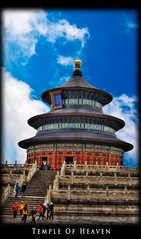Saturday, December 19, 2009
Ying Yang Symbol
So I said I would explain the significance of the Yin Yang symbol pictured. A few years ago I began to learn Tai Chi and became very interested in the origins and history of this health dance or moving meditation practice. I started reading about Chi or Qi and found myself struck by how the ancient Chinese idea that the energy of the universe is present in all living things and that it is also reflected in the human body. Like the atomic view of the world held by Epicurus, it is not inconsistent with modern Physics.
The Yin Yang concept was formulated to explain the workings of Chi and represents how seemingly opposing forces are interconnected and interdependent in the natural world, giving rise to each other in turn with the aim of achieving balance or harmony. There is no good and evil and no dark side of the force! It is a very ancient concept and these symbols, in the form of a tiger and a dragon, have been found in a Chinese Neolithic burial site dated 5000 BC.
The Tao of Chi can be translated as the way of energy and the Tao Te Ching was written by Lao-Tzu the founder of Taoism, in the 6th century BC. The three jewels of the Tao are compassion, moderation and humility. Sound familiar? Lao Tzu also wrote:
The way that can be described is not the eternal way
The name that can be named is not the eternal name
I think it is a warning about being too certain in your beliefs and thinking that the mysteries of the universe can be adequately described in one book or set of texts or perhaps even by words at all. The Chinese incorporated these views along side those of Confucius and Buddha, which is one of the good things about Polytheism – it generally promotes religious tolerance with its view that your god must just be a local manifestation of one of my gods phenomenon. I will end with the quote “There are many ways to the top of the mountain, but once there the view is the same.”
Subscribe to:
Post Comments (Atom)



Hi Karen,
ReplyDeleteYou say that Ying/Yang is "not inconsistent with modern physics". I am not sure most physicists would be comfortable with you trying to justify your beliefs in this way. Physics does not real provide any evidence for or against different philosophical interpretations.
On the other hand, I think science leads us away from a view that "all points of view are equally valid". Modern physics is particularly good at weeding out "alternative" theories: the aether, steady state universe, locally realistic alternatives to quantum theory.
Hi Ross,
ReplyDeleteAlthough I find the views of Epicurus, Lao-Tzu and Buddha illuminating and interesting, I do not believe in them in a religious sense. There are some things I do not agree with them about. For example Pythagoras, while no doubt a brilliant mathematician, had this weird prohibition against eating beans for his followers, Epicurus was all in favor of the single sexless life, and Buddha said you shouldn't drink alcohol.
I prefer to make my own decisions about what to eat, drink, who to have sex with and what to think, so I am not becoming a Taoist or an Epicurean anytime soon. Actually, I am yet to have read or met anyone whose views I believe in as the absolute truth.
As for physics I thought that the existence of atoms and energy were fairly fundamental concepts. I did not say that physics justified the views of either Epicurus or Lao-Tzu, merely that those philosophies are not inconsistent with the way science, as I understand it at any rate, views the universe today and they thought it over 2,500 years ago which I think is pretty amazing and fairly unusual.
In answer to your view that science leads us away from the idea that all points of view are equally valid, I don't think science has much to say on how to lead an ethical or a good life. That is why religion still exists and why I turn to philosophy. It also seems to me that as long as you obey the law and respect the rights of others, all religions and philosophies are equally valid although perhaps not to their believers!